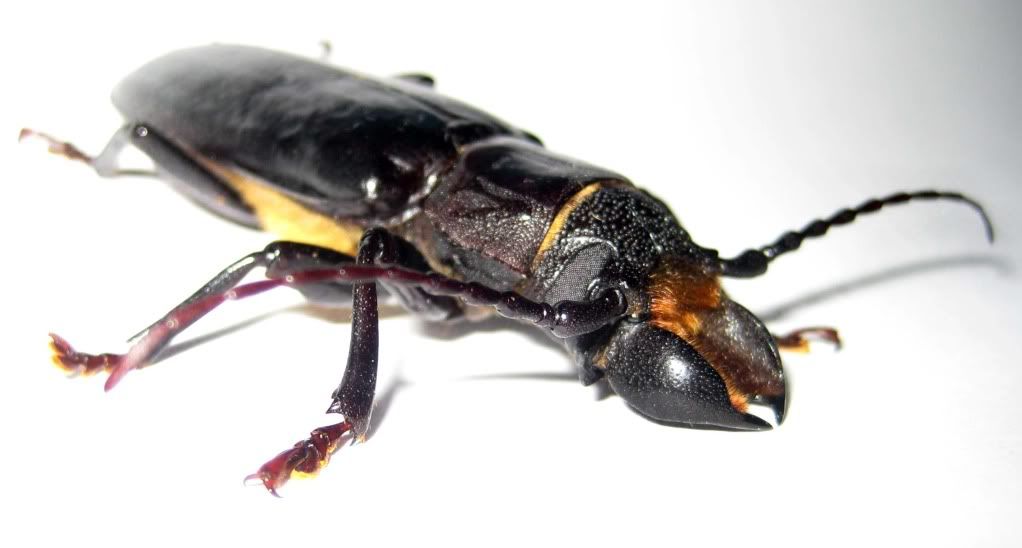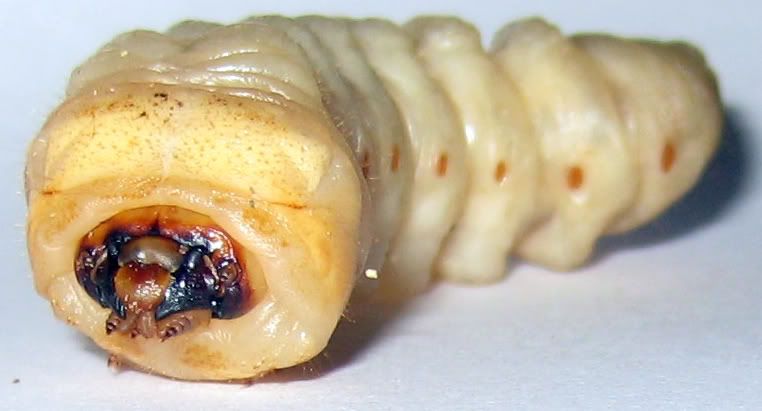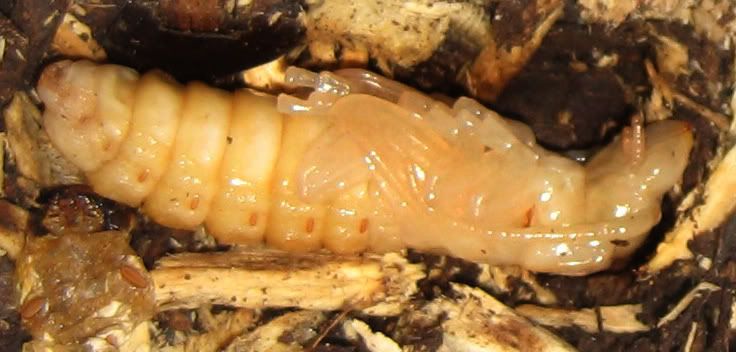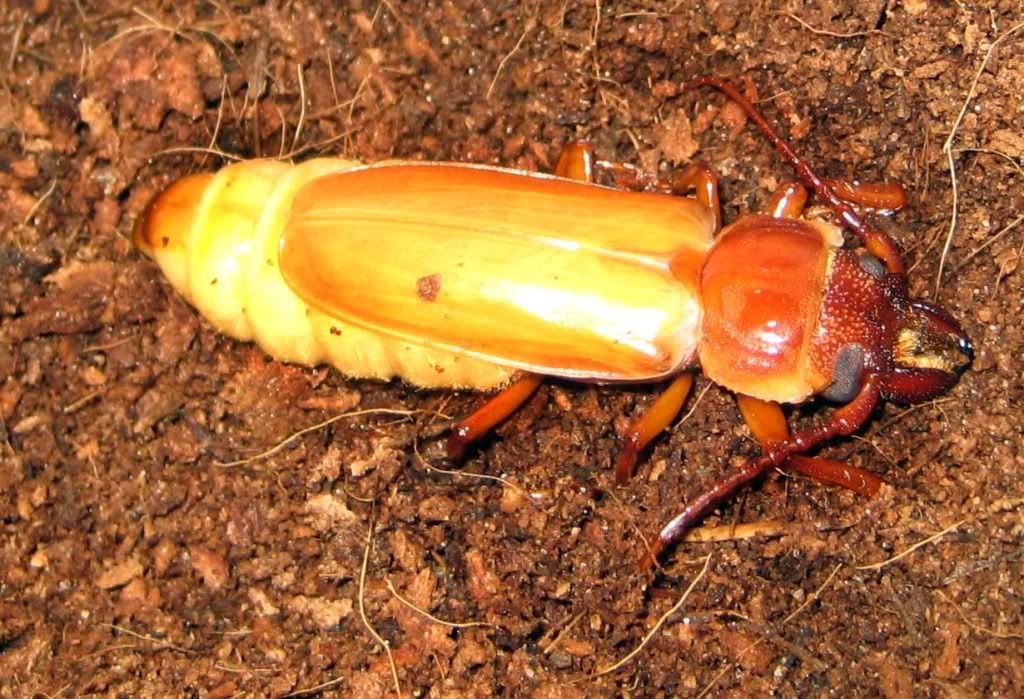Guest viewing is limited
- You have a limited number of page views remaining
- 5 guest views remaining
- Register now to remove this limitation
- Already a member? Click here to login
You are using an out of date browser. It may not display this or other websites correctly.
You should upgrade or use an alternative browser.
You should upgrade or use an alternative browser.
Hardwood stump borer
- Thread starter Philibugman
- Start date
Philibugman
L3
Lucanus, thank you for your reply and info. How dimorphic are they?Yes they are!!! Both of them are females so you need to get a male to breed.
Females lay eggs on deciduous trees but seen to lay eggs on anywhere when they can't find a place to lay eggs for a long time.
Any idea of what the adult eats?
Anything more that I need to know besides finding Mr. Mallodon is welcome.
Philibugman
L3
Lucanus,Adults don't seem to eat. They can live upto few weeks with out any food.
Males have rectangular thorax with two bumps on it. I will post some pictures soon
Thank you again.
Nice photo and interesting post! Please describe your discovery/collection of them. Did you find them in the stump or outside, as adults or larvae, etc?
Philibugman
L3
The beetles were found outside of the log "stump". The origin of the stump: Some months prior I removed a Live Oak post which was set in the ground 4 years ago; the base was 3 feet under. During removal about six larvae of HSB were found and also larvae from another kind of beetle (small scarab). These larvae were all damaged during the removal and cutting. The 6 foot Live Oak post was cut into one foot pieces for future beetle projects. The log were the adult HSB emerged had been submerged in water for one week, and then set aside for future use. The place were I keep these "seudo tretaed logs" was confined in a stainless steel screaned close area; nothing goes in or out. I was puzzel to see these HSB emerging from these logs.Nice photo and interesting post! Please describe your discovery/collection of them. Did you find them in the stump or outside, as adults or larvae, etc?
I guess they were in a kind of water proof chamber cell during the submerg treatmet. By the way another good reason why I double check before using the wood by using freezing and microwave treatment.
Sara
Pupa
These are awesome and easy beetle to keep females seem to lay ova quite easily when put on larger soft rotten tallow tree wood. "the kinda i raise are oak specific, but i have great luck with tallow.
Make sure to heat treat the tallow wood because it has more fungus than any other wood imagined.
You have some nice ladies I posted a pic of one of my males
There grubs are awesome bread loaf shaped creatures! They are easily pupated but need to be kept seemingly dry in comparison to every other beetle i raise. Keep 3rd enstar grubs separate keeping them together messes there pupation, the lower enstars are fine together.
the eggs take 4 weeks to hatch the 1st to pupa takes 4-5 months the pupa stage takes 3-4 weeks.
Adults love to eat maple syrup and will lap it up readily and will drink if sprayed with water however they only make it a month or 2 at the most.
I will post pics
enjoy.
Make sure to heat treat the tallow wood because it has more fungus than any other wood imagined.
You have some nice ladies I posted a pic of one of my males
There grubs are awesome bread loaf shaped creatures! They are easily pupated but need to be kept seemingly dry in comparison to every other beetle i raise. Keep 3rd enstar grubs separate keeping them together messes there pupation, the lower enstars are fine together.
the eggs take 4 weeks to hatch the 1st to pupa takes 4-5 months the pupa stage takes 3-4 weeks.
Adults love to eat maple syrup and will lap it up readily and will drink if sprayed with water however they only make it a month or 2 at the most.
I will post pics
enjoy.
Philibugman
L3
Sara,Male have typically larger mandibles



Grubs look kinda like a pekingese

Pupas are yellow until the last week of pupation when they turn a slight darker orange

Once pupated they need about a week to dry out one pictured here is a female

hope this helps
Very nice pics, not only great lens, good eye!
Good pictures tell a lot. Thank you for sharing your Mallodonian husbandry knowledge.
I hope to find a male before is too late. Now I feel guilty about all the grubs wasted during the chainsaw massacre.
Note: Nine banded armadillos must have a very acute sense of smell and hearing,since they like to dig around the Oak posts "stumps" in search of beetle larvae.

